Assessing Wind Energy Projects Potential in Pakistan: Challenges and Way Forward
Abstract
1. Introduction
- Map the existing literature on the wind energy potential in Pakistan.
- Identify areas of future research and policy recommendations for the wind energy sector of Pakistan.
2. Research Methodology
- (1)
- The identification of keywords based on the experience of the authors, the assessment of relevant literature, and brainstorming sessions held among the authors. The identified keywords included, but were not limited to, “wind energy potential”, “Pakistan”, and “renewable energy potential”. These keywords were organized into search strings, for instance, “wind energy potential” OR “renewable energy potential” AND “Pakistan.”
- (2)
- The search strings were used to carry out a preliminary search on Google Scholar. No additional keywords were identified during this process.
- (3)
- The search string was used on the six databases mentioned to identify the key citation indices for review. The selection was made based on the volume of citations relevant to the basic search string.
- (4)
- The articles were reviewed based on the inclusion and exclusion criteria mentioned in Table 1. A two-stage process was used to reduce the number of citations to be analyzed. The first stage was based on the article title and the second stage was based on the analysis of abstracts.
- (5)
- The 82 citations that were left at the end of the second phase were analyzed for their content and organized into different categories according to the objectives of this study. A list of themes was compiled and a summary and discussion on each theme were produced in this study.
| No. | Criteria | Reasons |
|---|---|---|
| Inclusion Criteria | ||
| 1 | Studies focusing on wind energy potential as a means of gaining sustainability in projects from a multi-stakeholder point of view and give solutions | The focus of the study is to identify issues and potential solutions available in the literature in this context. Solutions can come from multi-stakeholders including public and private stakeholders |
| 2 | Studies that have kept Pakistan in context | To keep in line with the overall context of the study |
| 3 | Studies containing conceptual, empirical, quantitative, and qualitative methodologies, and literature reviews | The aim is to include all relevant academic writing |
| 4 | Articles indexed in various databases including Scopus, Emerald, and Science Direct | The mentioned databases have all of the main journals indexed |
| 5 | Articles published in social sciences, economics, and management sciences were considered for inclusion | The article was written to contextualize wind potential from a policy and regulatory angle, particularly from a non-technical point of view |
| 6 | Articles focusing on developing countries | Since the context of this study is Pakistan, a developing country, studies that do not explicitly mention developing countries were deemed irrelevant. However, studies focused on developed countries, but gave a context of developing countries, were included |
| Exclusion Criteria | ||
| 1 | Studies published in related areas before 2012 | The first wind powerplant in Pakistan became operational in 2013. In 2012, most of the awareness about the policy and regulatory issues concerning wind energy was made public. Literature before 2012 carries information that is not relevant in today’s context [20] |
| 2 | Studies related to VAWT were not considered | VAWT products available globally have not been economically feasible on a commercial scale till now |
| 3 | Business magazine articles, editorials, or similar publications were not considered | Only journals, books, periodicals, conferences, and government-published research were considered |
| 4 | Linguistic expression | Articles published in the English language were considered. This was due to linguistic constraints |
| 5 | Articles published in biological and engineering sciences were excluded | A non-technical analysis was required to contextualize the topic from a policy and regulatory angle |
3. Descriptive Analysis
4. Content Analysis
5. Discussion
6. Discussion of the Interviews
7. Conclusions
Author Contributions
Funding
Conflicts of Interest
References
- Foroumandi, E.; Nourani, V.; Kantoush, S.A. Investigating the main reasons for the tragedy of large saline lakes: Drought, climate change, or anthropogenic activities? A call to action. J. Arid Environ. 2022, 196, 104652. [Google Scholar] [CrossRef]
- Kongboon, R.; Gheewala, S.H.; Sampattagul, S. Greenhouse gas emissions inventory data acquisition and analytics for low carbon cities. J. Clean. Prod. 2022, 343, 130711. [Google Scholar] [CrossRef]
- Liu, Y.; Tong, D.; Cheng, J.; Davis, S.J.; Yu, S.; Yarlagadda, B.; Clarke, L.E.; Brauer, M.; Cohen, A.J.; Kan, H.; et al. Role of climate goals and clean-air policies on reducing future air pollution deaths in China: A modelling study. Lancet Planet. Health 2022, 6, e92–e99. [Google Scholar] [CrossRef] [PubMed]
- Caineng, Z.; Feng, M.A.; Songqi, P.; Minjie, L.; Zhang, G.; Xiong, B.; Ying, W.; Liang, Y.; Zhi, Y. Earth energy evolution, human development and carbon neutral strategy. Pet. Explor. Dev. 2022, 49, 468–488. [Google Scholar]
- Aslam, H.; Nazir, A. Prospects of Coal Investments and Potential of Renewable Energy Transition in Thar Region of Pakistan. In SDPI Working Paper Series; SDPI: Islamabad, Pakistan, 2021; Available online: https://www.jstor.org/stable/pdf/resrep34174.3.pdf (accessed on 13 October 2022).
- Cordroch, L.; Hilpert, S.; Wiese, F. Why renewables and energy efficiency are not enough-the relevance of sufficiency in the heating sector for limiting global warming to 1.5° C. Technol. Forecast. Soc. Chang. 2022, 175, 121313. [Google Scholar] [CrossRef]
- Rahman, A.; Farrok, O.; Haque, M.M. Environmental impact of renewable energy source based electrical power plants: Solar, wind, hydroelectric, biomass, geothermal, tidal, ocean, and osmotic. Renew. Sustain. Energy Rev. 2022, 161, 112279. [Google Scholar] [CrossRef]
- Zakeri, B.; Paulavets, K.; Barreto-Gomez, L.; Echeverri, L.G.; Pachauri, S.; Boza-Kiss, B.; Zimm, C.; Rogelj, J.; Creutzig, F.; Ürge-Vorsatz, D.; et al. Pandemic, War, and Global Energy Transitions. Energies 2022, 15, 6114. [Google Scholar] [CrossRef]
- Lee, C.-C.; Xing, W.; Lee, C.-C. The impact of energy security on income inequality: The key role of economic development. Energy 2022, 248, 123564. [Google Scholar] [CrossRef]
- Arshad, M.; O’Kelly, B.C. Diagnosis of electricity crisis and scope of wind power in Pakistan. Energy 2018, 171, 158–170. [Google Scholar] [CrossRef]
- Zulfiqar, A.; Nazir, A.; Khalid, A. Examining the Future Direction of Electricity Market in Pakistan: The Case of Competitive Trading Bilateral Contracts Market (CTBCM). In SDPI Working Paper Series; Sustainable Development Policy Institute: Islamabad, Pakistan, 2022; Available online: https://sdpi.org/assets/lib/uploads/Examining%20the%20Future%20Direction%20of%20Electricity%20Market%20in%20Pakistan%20The%20Case%20of%20Competitive%20Trading%20Bilateral%20Contracts%20Market%20(CTBCM)%20-%20W%20-%20197.pdf (accessed on 13 October 2022).
- Economic Survey of Pakistan. 2022. Available online: https://www.finance.gov.pk/survey/chapter_22/Economic%20Survey%202021-22.pdf (accessed on 13 October 2022).
- Raza, M.Y.; Lin, B. Energy efficiency and factor productivity in Pakistan: Policy perspectives. Energy 2022, 247, 123461. [Google Scholar] [CrossRef]
- Khatri, S.A.; Harijan, K.; Uqaili, M.A.; Shah, S.F.; Mirjat, N.H.; Kumar, L. Solar photovoltaic potential and diffusion assessment for Pakistan. Energy Sci. Eng. 2022, 10, 2452–2474. [Google Scholar] [CrossRef]
- Ahmad, U.S.; Usman, M.; Hussain, S.; Jahanger, A.; Abrar, M. Determinants of renewable energy sources in Pakistan: An overview. Environ. Sci. Pollut. Res. 2022, 29, 29183–29201. [Google Scholar] [CrossRef] [PubMed]
- Adaramola, M. Wind Turbine Technology: Principles and Design; CRC Press: Boca Raton, FL, USA, 2014. [Google Scholar]
- Akbari, V.; Naghashzadegan, M.; Kouhikamali, R.; Afsharpanah, F.; Yaïci, W. Multi-Objective Optimization and Optimal Airfoil Blade Selection for a Small Horizontal-Axis Wind Turbine (HAWT) for Application in Regions with Various Wind Potential. Machines 2022, 10, 687. [Google Scholar] [CrossRef]
- Ngoc, D.M.; Luengchavanon, M.; Anh, P.T.; Humphreys, K.; Techato, K. Shades of Green: Life Cycle Assessment of a Novel Small-Scale Vertical Axis Wind Turbine Tree. Energies 2022, 15, 7530. [Google Scholar] [CrossRef]
- Ali, S.; Yan, Q.; Irfan, M.; Ameer, W.; Atchike, W.D.; Acevedo-Duque, Á. Green Investment for Sustainable Business Development: The Influence of Policy Instruments on Solar Technology Adoption. Energy Res. 2022, 10, 874824. [Google Scholar] [CrossRef]
- G.o.P. Alternate Energy Development Board (AEDB). Current Status Of Wind Power Projects. 2022. Available online: http://www.aedb.org/ae-technologies/wind-power/wind-current-status (accessed on 13 October 2022).
- Ayaz, M.U.; Majeed, Z. Green Financing to Support Energy Transition: Options and Challenges for Pakistan. In SDPI Policy Brief Series; SDPI: Islamabad, Pakistan, 2022; 20p, Available online: https://sdpi.org/assets/lib/uploads/Green%20Financing%20to%20Support%20Energy%20Transition%20Options%20and%20Challenges%20for%20Pakistan%20pb-82.pdf (accessed on 13 October 2022).
- Raza, M.Y.; Lin, B. Natural gas consumption, energy efficiency and low carbon transition in Pakistan. Energy 2022, 240, 122497. [Google Scholar] [CrossRef]
- Arshad, F.; Shamshad, M. Energy Crisis in Pakistan: Socio-Economic Implications and the Way Forward. Ann. Soc. Sci. Perspect. 2022, 3, 105–115. [Google Scholar] [CrossRef]
- Wang, Y.; Xu, L.; Solangi, Y.A. Strategic renewable energy resources selection for Pakistan: Based on SWOT-Fuzzy AHP approach. Sustain. Cities Soc. 2020, 52, 101861. [Google Scholar] [CrossRef]
- Solangi, Y.A.; Tan, Q.; Mirjat, N.H.; Ali, S. Evaluating the strategies for sustainable energy planning in Pakistan: An integrated SWOT-AHP and Fuzzy-TOPSIS approach. J. Clean. Prod. 2019, 236, 117655. [Google Scholar] [CrossRef]
- Ghafoor, A.; Rehman, T.u.; Munir, A.; Ahmad, M.; Iqbal, M. Current status and overview of renewable energy potential in Pakistan for continuous energy sustainability. Renew. Sustain. Energy Rev. 2016, 60, 1332–1342. [Google Scholar] [CrossRef]
- Kardooni, R.; Yusoff, S.B.; Kari, F.B. Renewable energy technology acceptance in Peninsular Malaysia. Energy Policy 2016, 88, 1–10. [Google Scholar] [CrossRef]
- Baloch, M.H.; Kaloi, G.S.; Memon, Z.A. Current scenario of the wind energy in Pakistan challenges and future perspectives: A case study. Energy Rep. 2016, 2, 201–210. [Google Scholar] [CrossRef]
- Shami, S.H.; Ahmad, J.; Zafar, R.; Haris, M.; Bashir, S. Evaluating wind energy potential in Pakistan’s three provinces, with proposal for integration into national power grid. Renew. Sustain. Energy Rev. 2016, 53, 408–421. [Google Scholar] [CrossRef]
- Shoaib, M.; Siddiqui, I.; Amir, Y.M.; Rehman, S.U. Evaluation of wind power potential in Baburband (Pakistan) using Weibull distribution function. Renew. Sustain. Energy Rev. 2017, 70, 1343–1351. [Google Scholar] [CrossRef]
- Kamran, M.; Fazal, M.R.; Mudassar, M. Towards empowerment of the renewable energy sector in Pakistan for sustainable energy evolution: SWOT analysis. Renew. Energy 2020, 146, 543–558. [Google Scholar] [CrossRef]
- Bhutto, A.W.; Bazmi, A.A.; Zahedi, G. Greener energy: Issues and challenges for Pakistan—Wind power prospective. Renew. Sustain. Energy Rev. 2013, 20, 519–538. [Google Scholar] [CrossRef]
- Aman, M.M.; Jasmona, G.B.; Ghufran, A.; Bakar, A.H.A.; Mokhlis, H. Investigating possible wind energy potential to meet the power shortage in Karachi. Renew. Sustain. Energy Rev. 2013, 18, 528–542. [Google Scholar] [CrossRef]
- Ashfaq, A.; Ianakiev, A. Features of fully integrated renewable energy atlas for Pakistan; wind, solar and cooling. Renew. Sustain. Energy Rev. 2018, 97, 14–27. [Google Scholar] [CrossRef]
- Farooq, M.K.; Kumar, S. An assessment of renewable energy potential for electricity generation in Pakistan. Renew. Sustain. Energy Rev. 2013, 20, 240–254. [Google Scholar] [CrossRef]
- Khahro, S.F.; Tabbassum, K.; Soomro, A.M.; Liao, X.; Alvi, M.B.; Dong, L.; Manzoor, M.F. Techno-economical evaluation of wind energy potential and analysis of power generation from wind at Gharo, Sindh Pakistan. Renew. Sustain. Energy Rev. 2014, 35, 460–475. [Google Scholar] [CrossRef]
- Khan, K.S.; Tariq, M. Wind resource assessment using SODAR and meteorological mast—A case study of Pakistan. Renew. Sustain. Energy Rev. 2018, 81, 2443–2449. [Google Scholar] [CrossRef]
- Mirza, U.K.; Ahmad, N.; Majeed, T.; Harijan, K. Wind energy development in Pakistan. Renew. Sustain. Energy Rev. 2007, 11, 2179–2190. [Google Scholar] [CrossRef]
- Muneer, T.; Asif, M.; Munawwar, S. Sustainable production of solar electricity with particular reference to the Indian economy. Renew. Sustain. Energy Rev. 2005, 9, 444–473. [Google Scholar] [CrossRef]
- Qu, M.; Ahponen, P.; Tahvanainen, L.; Gritten, D.; Mola-Yudego, B.; Pelkonen, P. Chinese university students’ knowledge and attitudes regarding forest bio-energy. Renew. Sustain. Energy Rev. 2011, 15, 3649–3657. [Google Scholar] [CrossRef]
- Sheikh, M.A. Renewable energy resource potential in Pakistan. Renew. Sustain. Energy Rev. 2009, 13, 2696–2702. [Google Scholar] [CrossRef]
- Siddique, S.; Wazir, R. A review of the wind power developments in Pakistan. Renew. Sustain. Energy Rev. 2016, 57, 351–361. [Google Scholar] [CrossRef]
- Rabbani, R.; Zeeshan, M. Impact of policy changes on financial viability of wind power plants in Pakistan. Renew. Energy 2022, 193, 789–806. [Google Scholar] [CrossRef]
- Saeed, M.A.; Ahmed, Z.; Zhang, W. Wind energy potential and economic analysis with a comparison of different methods for determining the optimal distribution parameters. Renew. Energy 2020, 161, 1092–1109. [Google Scholar] [CrossRef]
- Abbas, S.Z.; Tanweer, R.; Ahmad, F.; Rasheed, F.U.; Karim, J.; Raza, A. Assessment of Wind Energy Potential for Small Scale Power Generation at Thatta, Sindh, Pakistan. J. Basic Appl. Sci. 2015, 11, 261–264. [Google Scholar] [CrossRef]
- Jamil, T.; Shah, G.S.A.A. Comparison of Wind Potential of Ormara and Jiwani (Balochistan), Pakistan. J. Basic Appl. Sci. 2016, 12, 411–419. [Google Scholar] [CrossRef]
- Khan, J.K.; Shoaib, M.; Uddin, Z.; Siddiqui, I.A.; Aijaz, A.; Siddiqui, A.A.; Hussain, E. Comparison of Wind Energy Potential for Coastal Locations: Pasni and Gwadar. J. Basic Appl. Sci. 2015, 11, 211–216. [Google Scholar] [CrossRef]
- Nayyara, Z.A.; Zaighamb, N.A.; Qadeera, A. Long Term Wind Trends Analysis of Coastal Belt of Pakistan. J. Basic Appl. Sci. 2012, 8, 537–546. [Google Scholar] [CrossRef]
- Saulat, H.; Khan, M.M.; Aslam, M.; Chawla, M.; Rafiq, S.; Zafar, F.; Khan, M.M.; Bokhari, A.; Jamil, F.; Bhutto, A.W.; et al. Wind speed pattern data and wind energy potential in Pakistan: Current status, challenging platforms and innovative prospects. Environ. Sci. Pollut. Res. 2021, 28, 34051–34073. [Google Scholar] [CrossRef]
- Shah, S.A.A.; Solangi, Y.A. A sustainable solution for electricity crisis in Pakistan: Opportunities, barriers, and policy implications for 100% renewable energy. Environ. Sci. Pollut. Res. 2019, 26, 29687–29703. [Google Scholar] [CrossRef] [PubMed]
- Baloch, M.; Abro, S.; Kaloi, G.S.; Mirjat, N.; Tahir, S.; Nadeem, M.; Gul, M.; Memon, Z.; Kumar, M. A Research on Electricity Generation from Wind Corridors of Pakistan (Two Provinces): A Technical Proposal for Remote Zones. Sustainability 2017, 9, 1611. [Google Scholar] [CrossRef]
- Gul, M.; Tai, N.; Huang, W.; Nadeem, M.H.; Yu, M. Evaluation of Wind Energy Potential Using an Optimum Approach based on Maximum Distance Metric. Sustainability 2020, 12, 1999. [Google Scholar] [CrossRef]
- Gul, M.; Tai, N.; Huang, W.; Nadeem, M.H.; Yu, M. Assessment of Wind Power Potential and Economic Analysis at Hyderabad in Pakistan: Powering to Local Communities Using Wind Power. Sustainability 2019, 11, 1391. [Google Scholar] [CrossRef]
- Ahmad, S.S.; Al Rashid, A.; Raza, S.A.; Zaidi, A.A.; Khan, S.Z.; Koç, M. Feasibility analysis of wind energy potential along the coastline of Pakistan. Ain Shams Eng. J. 2022, 13, 101542. [Google Scholar] [CrossRef]
- Tahir, Z.U.R.; Asim, M.; Jamil, S.; Shad, R.; Hayat, N.; Moaz, A.; Akram, M.T.; Safyan, M. Comparison of Reanalysis, Analysis and Forecast datasets with measured wind data for a Wind Power Project in Jhimpir, Pakistan. J. Phys. Conf. Ser. 2018, 1102, 012004. [Google Scholar] [CrossRef]
- Baloch, M.H.; Wang, J.; Kaloi, G.S.; Memon, A.A.; Larik, A.S.; Sharma, P. Techno-economic analysis of power generation from a potential wind corridor of pakistan: An overview. Environ. Prog. Sustain. Energy 2019, 38, 706–720. [Google Scholar] [CrossRef]
- Ahmed, M.; Ali, M.N.; Memon, I.A. A review of wind energy potential in Sindh, Pakistan. In AIP Conference Proceedings; AIP Publishing LLC: Melville, NY, USA, 2019; Volume 2119, p. 020017. [Google Scholar]
- Khan, M.Z.M.; Rehman, H.M.A.U.; Janjua, A.K.; Waqas, A.; Shakir, S.; Ali, M. Techno-Economic Assessment of Wind Farm for Sustainable Power Generation in Northern Coastal Region of Arabian Sea. 2022, pp. 1–30. Available online: https://papers.ssrn.com/sol3/papers.cfm?abstract_id=4133031 (accessed on 6 September 2022).
- Mehmood, A.; Said, Z.; Waqas, A.; Arshad, W. Techno-economic performance assessment of central-grid wind turbines at major geographical locations of Pakistan. J. Energy Syst. 2017, 1, 43–55. [Google Scholar] [CrossRef][Green Version]
- Shifa, F.A.; Butt, M.F.U. A feasibility study for deployment of wind energy based power production solution in Islamabad, Pakistan. In Proceedings of the International Conference on Emerging Technologies, Islamabad, Pakistan, 8–9 October 2012; IEEE: Piscataway, NJ, USA, 2012; pp. 1–6. [Google Scholar]
- Nayyar, Z.A.; Zaigham, N.A. Assessment of Wind Potential in Southeastern Part of Pakistan Along Coastal Belt of Arabian Sea. Arab. J. Sci. Eng. Vol. 2013, 38, 1917–1927. [Google Scholar] [CrossRef]
- Khahro, S.F.; Soomro, A.M.; Tabbassum, K.; Dong, L.; Xiaozhong, L. Assessment of Wind Power Potential at Hawksbay, Karachi Sindh, Pakistan. Telkomnika Indones. J. Electr. Eng. 2013, 11, 3479–3490. [Google Scholar] [CrossRef]
- Amjad, M.; Zafar, Q.; Khan, F.; Sheikh, M.M. Evaluation of weather research and forecasting model for the assessment of wind resource over Gharo, Pakistan. Int. J. Climatol. 2015, 35, 1821–1832. [Google Scholar] [CrossRef]
- Kaloi, G.S.; Wang, J.; Baloch, M.H.; Tahir, S. Wind Energy Potential at Badin and Pasni Coastal Line of Pakistan. Int. J. Renew. Energy Dev. 2017, 6, 103–110. [Google Scholar] [CrossRef]
- Hulio, Z.H.; Jiang, W.; Rehman, S. Technical and economic assessment of wind power potential of Nooriabad, Pakistan. Energy Sustain. Soc. 2017, 7, 35. [Google Scholar] [CrossRef]
- Khan, M.A.; Çamur, H.; Kassem, Y. Modeling predictive assessment of wind energy potential as a power generation sources at some selected locations in Pakistan. Model. Earth Syst. Environ. 2019, 5, 555–569. [Google Scholar] [CrossRef]
- Hulio, Z.H.; Jiang, W.; Khan, G.M. Statistical analysis of wind resource and energy potential assessment of Sanghar site, Sindh Pakistan. Int. J. Energy Sect. Manag. 2021, 16, 389–413. [Google Scholar] [CrossRef]
- Tahir, Z.U.R.; Kanwal, A.; Afzal, S.; Ali, S.; Hayat, N.; Abdullah, M.; Bin Saeed, U. Wind Energy Potential and Economic Assessment of Southeast of Pakistan. Int. J. Green Energy 2021, 18, 1–16. [Google Scholar] [CrossRef]
- Shoaib, M.; Dar, I.S.; Ahsan-ul-Haq, M.; Usman, R.M. A sustainable generalization of inverse Lindley distribution for wind speed analysis in certain regions of Pakistan. Model. Earth Syst. Environ. 2022, 8, 625–637. [Google Scholar] [CrossRef]
- Adnan, M.; Ahmad, J.; Ali, S.F.; Imran, M. A techno-economic analysis for power generation through wind energy: A case study of Pakistan. Energy Rep. 2021, 7, 1424–1443. [Google Scholar] [CrossRef]
- Duan, H. Emissions and temperature benefits: The role of wind power in China. Environ. Res. 2017, 152, 342–350. [Google Scholar] [CrossRef] [PubMed]
- Tareen, W.U.K.; Anjum, Z.; Yasin, N.; Siddiqui, L.; Farhat, I.; Malik, S.A.; Mekhilef, S.; Seyedmahmoudian, M.; Horan, B.; Darwish, M.; et al. The prospective non-conventional alternate and renewable energy sources in Pakistan—A focus on biomass energy for power generation, transportation, and industrial fuel. Energies 2018, 11, 2431. [Google Scholar] [CrossRef]
- Ahamd, M. State of the Art Compendium of Macro and Micro Energies. Adv. Sci. Technol. Res. J. 2019, 13, 88–109. [Google Scholar] [CrossRef]
- Baloch, M.H.; Kaloi, G.S.; Wang, J. Feasible Wind Power Potential from Coastal Line of Sindh Pakistan. Res. J. Appl. Sci. Eng. Technol. 2015, 10, 393–400. [Google Scholar] [CrossRef]
- Khattak, M.A.; Mukhtar, A.; Rafique, A.F. Greener Energy: Evaluating Wind Energy Potential in Pakistan. J. Adv. Rev. Sci. Res. 2016, 23, 1–15. [Google Scholar]
- Bhutto, Z.; Abbasi, S.A.; Jamali, S.Z.; Masroor, S.; Shah, J.; Shaikh, M.H.; Hussain, A. Evaluation of Drivers and Barriers of Wind Power Generation in Pakistan: SWOT-Delphi Method. Int. J. Energy Econ. Policy 2022, 12, 342–348. [Google Scholar] [CrossRef]
- Nazir, M.S.; Wang, Y.; Bilal, M.; Abdalla, A.N. Wind Energy, its Application, Challenges, and Potential Environmental Impact. In Handbook of Climate Change Mitigation and Adaptation; Springer International Publishing: Cham, Switzerland, 2022; pp. 899–935. [Google Scholar]
- Bilal, H.; Siwar, C.B.; Mokhtar, M.B.; Ahmad, S. Recent Development and Sustainability of Wind Power Sector in Pakistan. Int. J. Biomass Renew. 2018, 7, 24–34. [Google Scholar]
- Hu, X.; Imran, M.; Wu, M.; Moon, H.C.; Liu, X. Alternative to Oil and Gas: Review of Economic Benefits and Potential of Wind Power in Pakistan. Math. Probl. Eng. 2020, 2020, 8884228. [Google Scholar] [CrossRef]
- Al-Obaidi, A.S.M.; NguyenHuynh, T. Renewable vs. conventional energy: Which wins the race to sustainable development? IOP Conf. Ser. Mater. Sci. Eng. 2018, 434, 012310. [Google Scholar] [CrossRef]
- Momete, D.C. Analysis of the Potential of Clean Energy Deployment in the European Union. IEEE Access 2018, 6, 54811–54822. [Google Scholar] [CrossRef]
- Xu, Q.; Lan, P.; Zhang, B.; Ren, Z.; Yan, Y. Preparation of syngas via catalytic gasification of biomass with a nickel-based catalyst. Energy Sources Part A Recovery Util. Environ. Eff. 2013, 35, 848–858. [Google Scholar] [CrossRef]
- Kashif, M.; Awan, M.; Nawaz, S.; Amjad, M.; Talib, B.; Farooq, M.; Nizami, A.; Rehan, M. Untapped renewable energy potential of crop residues in Pakistan: Challenges and future directions. J. Environ. Manag. 2019, 256, 109924. [Google Scholar] [CrossRef]
- Nawaz, I.; Khan, R.A.; Khan, M.E.; Tiwari, G.N. Optimisation of clean environment parameters through renewable energy sources. Int. J. Ambient. Energy 2003, 24, 67–74. [Google Scholar] [CrossRef]
- Xiong, X.; Li, L.; Chen, F.; Zhang, J.; Tan, H. Typical pollutant species evolution behaviors study in retired wind turbine blade and coal thermal conversion process. J. Anal. Appl. Pyrolysis 2022, 168, 105771. [Google Scholar] [CrossRef]
- Hussain, M.A.; Abbas, S.; Ansari, M.R.K.; Zaffar, A.; Jan, B. Wind Speed Analysis of Some Coastal Areas near Karachi. In Proceedings of the Pakistan Academy of Sciences; Pakistan Academy of Sciences: Islamabad, Pakistan, 2014; Volume 51, pp. 83–91. [Google Scholar]
- Ziaei, S.M. The impacts of household social benefits, public expenditure on labour markets, and household financial assets on the renewable energy sector. Renew. Energy 2022, 181, 51–58. [Google Scholar] [CrossRef]
- Hamed, T.A.; Alshare, A. Environmental Impact of Solar and Wind energy—A Review. J. Sustain. Dev. Energy Water Environ. Syst. 2022, 10, 1–23. [Google Scholar] [CrossRef]
- Xu, K.; Chang, J.; Zhou, W.; Li, S.; Shi, Z.; Zhu, H.; Chen, Y.; Guo, K. A comprehensive estimate of life cycle greenhouse gas emissions from onshore wind energy in China. J. Clean. Prod. 2022, 338, 130683. [Google Scholar]
- Gul, A.; Chandio, A.A.; Siyal, S.A.; Rehman, A.; Xiumin, W. How climate change is impacting the major yield crops of Pakistan? an exploration from long-and short-run estimation. Environ. Sci. Pollut. Res. 2022, 29, 26660–26674. [Google Scholar]
- Jain, P.; Calcetas, P.; An, B.A. Guidelines for wind resource assessment: Best practices for countries initiating wind development. In ADB Publications; Asian Development Bank: Mandaluyong City, Philippines, 2014; Available online: https://www.adb.org/sites/default/files/publication/42032/guidelines-wind-resource-assessment.pdf (accessed on 15 June 2022).
- Khan, A.A.; Mehmood, Z.; Shahzad, A.; Chughtai, K.A.; Javed, A. Evaluation of Wind Energy Potential alongside Motorways of Pakistan. Asian J. Appl. Sci. Eng. 2014, 3, 7–13. [Google Scholar]
- Al Buhairi, M.H. A Statistical Analysis of Wind Speed Data and an Assessment of Wind Energy Potential in Taiz-Yemen. Assiut Univ. Bull. Environ. Res. 2016, 9, 21–33. [Google Scholar]
- Hulio, Z.H.; Jiang, W. Wind energy potential assessment for KPT with a comparison of different methods of determining Weibull parameters. Int. J. Energy 2020, 14, 59–84. [Google Scholar] [CrossRef]
- Habib, S.; Iqbal, K.M.J.; Amir, S.; Naseer, H.M.; Akhtar, N.; Rehman, W.U.; Khan, M.I. Renewable energy potential in Pakistan and barriers to its development for overcoming power crisis. J. Contemp. Issues Bus. Gov. 2021, 27, 6836–6846. [Google Scholar] [CrossRef]
- Hulio, Z.H.; Yousufzai, G.; Jiang, W. Statistical analysis of wind resource and energy potential assessment of Quaidabad site, Sindh Pakistan. J. Eng. Des. Technol. 2021, 19, 1291–1316. [Google Scholar] [CrossRef]
- Iqbal, W.; Yumei, H.; Abbas, Q.; Hafeez, M.; Mohsin, M.; Fatima, A.; Jamali, M.A.; Jamali, M.; Siyal, A.; Sohail, N. Assessment of Wind Energy Potential for the Production of Renewable Hydrogen in Sindh Province of Pakistan. Processes 2019, 7, 196. [Google Scholar] [CrossRef]
- Azhar, N.; Iqbal, S.; Nasir, S.M.; Akhtar, F.; Sarwar, F.; Rehman, A. Wind Data Analysis of Coastal Region of Balochistan (Pakistan) by Weibull and Rayleigh Method. Indian J. Sci. Technol. 2019, 12, 1–8. [Google Scholar] [CrossRef]
- Özkan, M.; Erkan, O. Control of a boundary layer over a wind turbine blade using distributed passive roughness. Renew. Energy 2022, 184, 421–429. [Google Scholar] [CrossRef]
- Raheem, A.; Shakoor, R.; Malik, M.I.; Amjad, M.; Nawaz, M.A. Cost effective exploration and environmental sustainability of Stand-alone Hybrid WindSolar System at Karufi, Pakistan. Tech. J. 2022, 27, 22–32. [Google Scholar]
- Duan, W.; Khurshid, A.; Nazir, N.; Calin, A.C. Pakistan’s energy sector—From a power outage to sustainable supply. Examining the role of China–Pakistan economic corridor. Energy Environ. 2022, 33, 1636–1662. [Google Scholar]
- Ali, A.; Salman, A.; Amjad, F.; Agyekum, E.B. A Fusion of Pestle and Hajer: To Assess Pakistan’s Renewable Energy Landscape. Available online: https://papers.ssrn.com/sol3/papers.cfm?abstract_id=4136273 (accessed on 17 June 2022).
- Hulio, Z.H.; Jiang, W.; Chandio, G.S. Power policies, challenges, and recommendations of renewable resource assessment in Pakistan. Energy Explor. Exploit. 2022, 40, 947–976. [Google Scholar] [CrossRef]
- Kumar, L.; Nadeem, F.; Sloan, M.; Restle-Steinert, J.; Deitch, M.J.; Naqvi, S.A.; Kumar, A.; Sassanelli, C. Fostering Green Finance for Sustainable Development: A Focus on Textile and Leather Small Medium Enterprises in Pakistan. Sustainability 2022, 14, 11908. [Google Scholar] [CrossRef]
- Raza, M.A.; Khatri, K.L.; Haque, M.I.U.; Shahid, M.; Rafique, K.; Waseer, T.A. Holistic and scientific approach to the development of sustainable energy policy framework for energy security in Pakistan. Energy Rep. 2022, 8, 4282–4302. [Google Scholar] [CrossRef]
- Kumar, J.; Xi, C.; Imran, M.; Kumari, J. Cross border project in China-Pakistan economic corridor and its influence on women empowerment perspectives. PLoS ONE 2022, 17, e0269025. [Google Scholar] [CrossRef] [PubMed]
- de Vasconcelos, R.M.; Silva, L.L.C.; González, M.O.A.; Santiso, A.M.; de Melo, D.C. Environmental licensing for offshore wind farms: Guidelines and policy implications for new markets. Energy Policy 2022, 171, 113248. [Google Scholar] [CrossRef]
- Yousuf, M.U.; Abbasi, M.A.; Kashif, M.; Umair, M. Energy, exergy, economic, environmental, energoeconomic, exergoeconomic, and enviroeconomic (7E) analyses of wind farms: A case study of Pakistan. Environ. Sci. Pollut. Res. 2022, 29, 67301–67324. [Google Scholar] [CrossRef] [PubMed]
- Leite, G.D.N.P.; Weschenfelder, F.; de Farias, J.G.; Ahmad, M.K. Economic and sensitivity analysis on wind farm end-of-life strategies. Renew. Sustain. Energy Rev. 2022, 160, 112273. [Google Scholar] [CrossRef]
- Msigwa, G.; Ighalo, J.O.; Yap, P.-S. Considerations on environmental, economic, and energy impacts of wind energy generation: Projections towards sustainability initiatives. Sci. Total Environ. 2022, 849, 157755. [Google Scholar] [CrossRef] [PubMed]
- Rosak-Szyrocka, J.; Żywiołek, J.; Mrowiec, M. Analysis of Customer Satisfaction with the Quality of Energy Market Services in Poland. Energies 2022, 15, 3622. [Google Scholar] [CrossRef]
- Rosak-Szyrocka, J.; Żywiołek, J. Qualitative Analysis of Household Energy Awareness in Poland. Energies 2022, 15, 2279. [Google Scholar] [CrossRef]
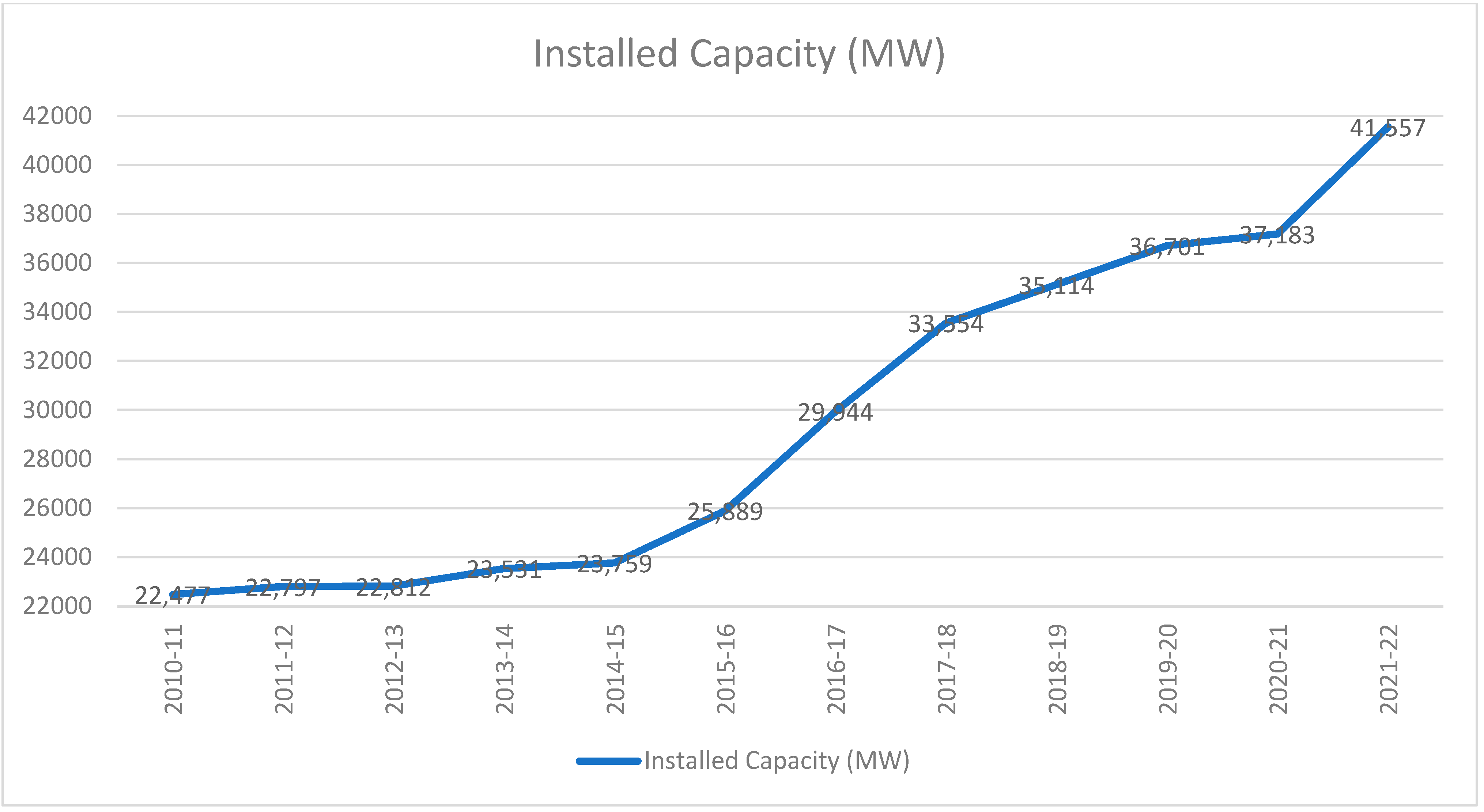

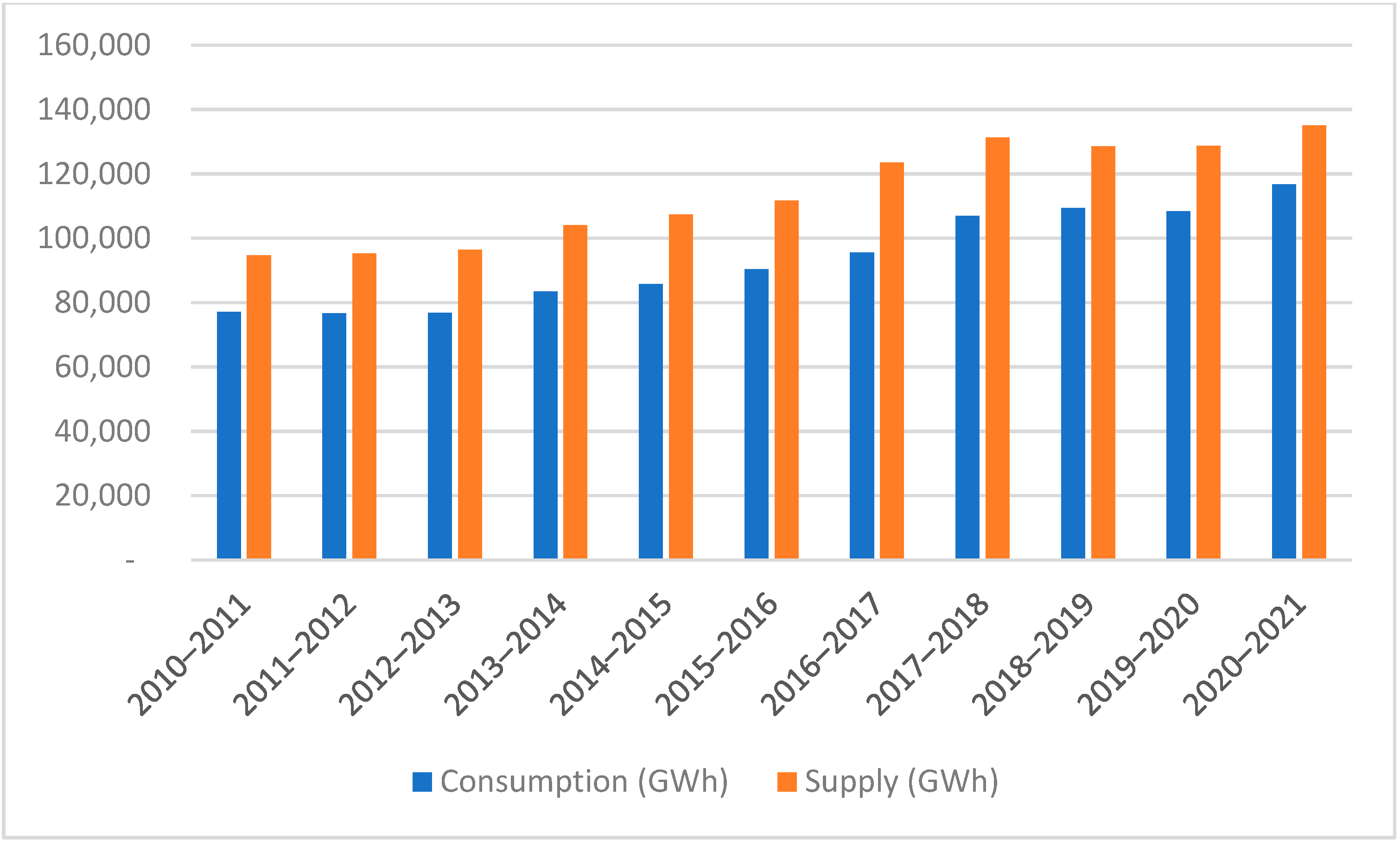
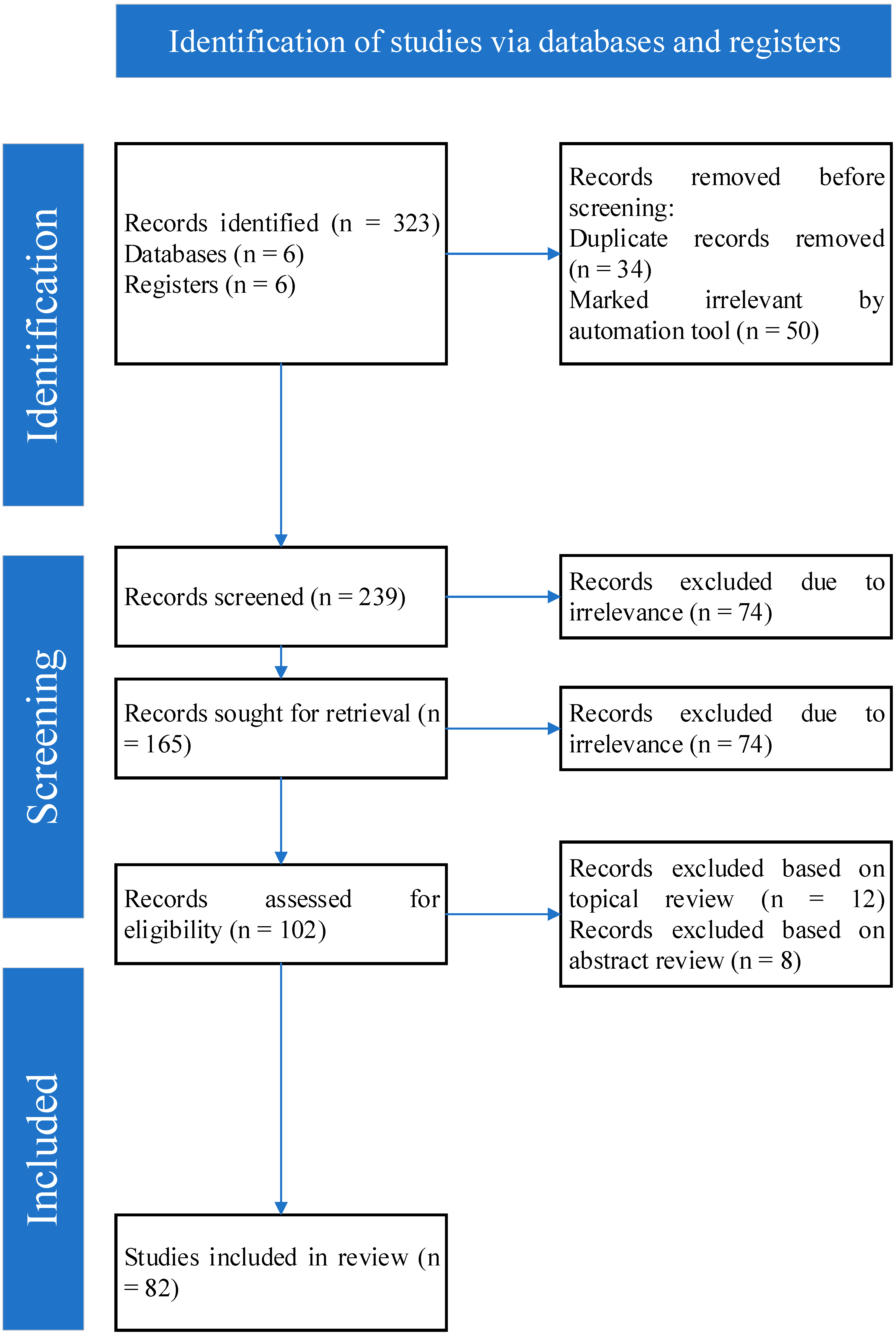
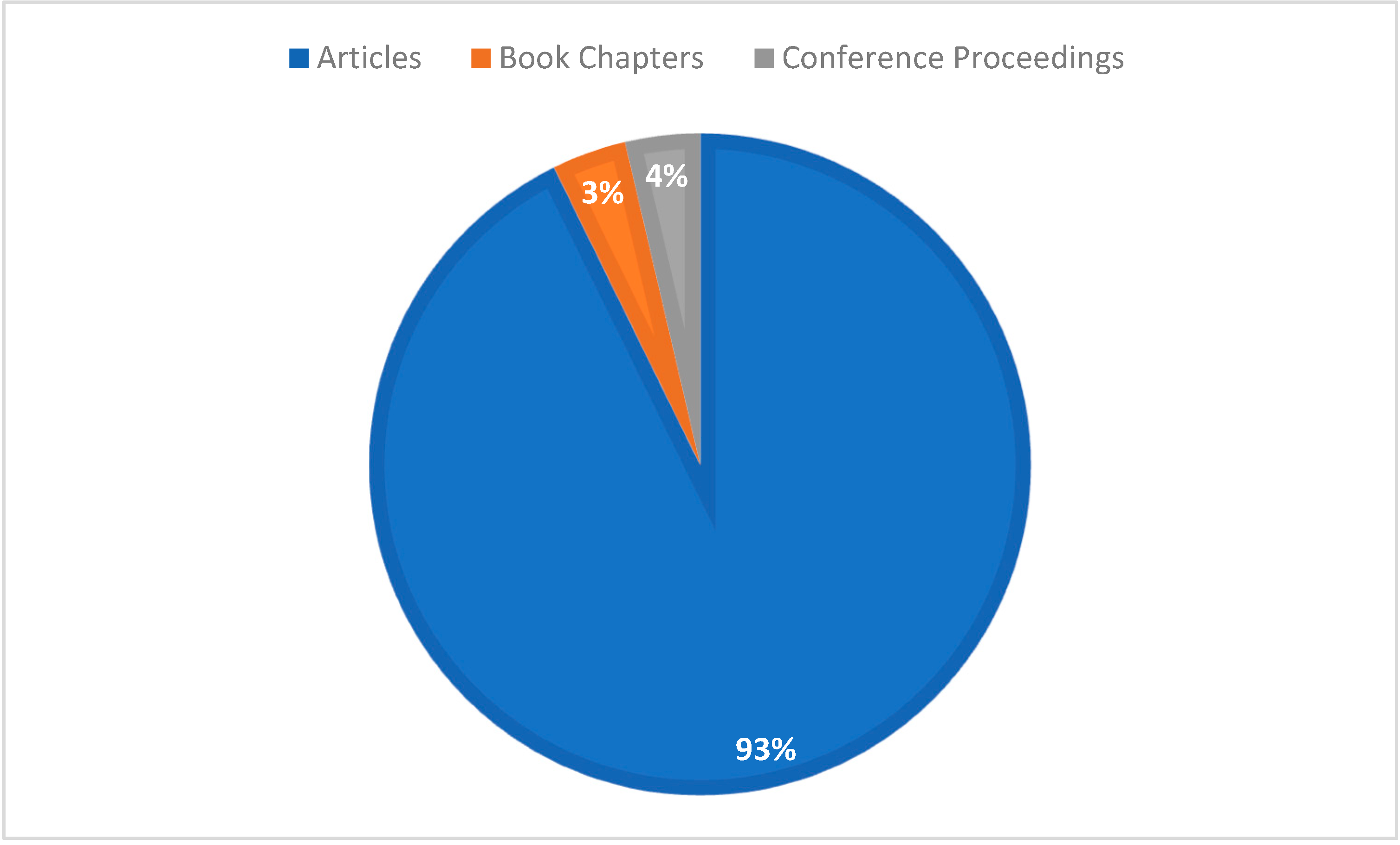
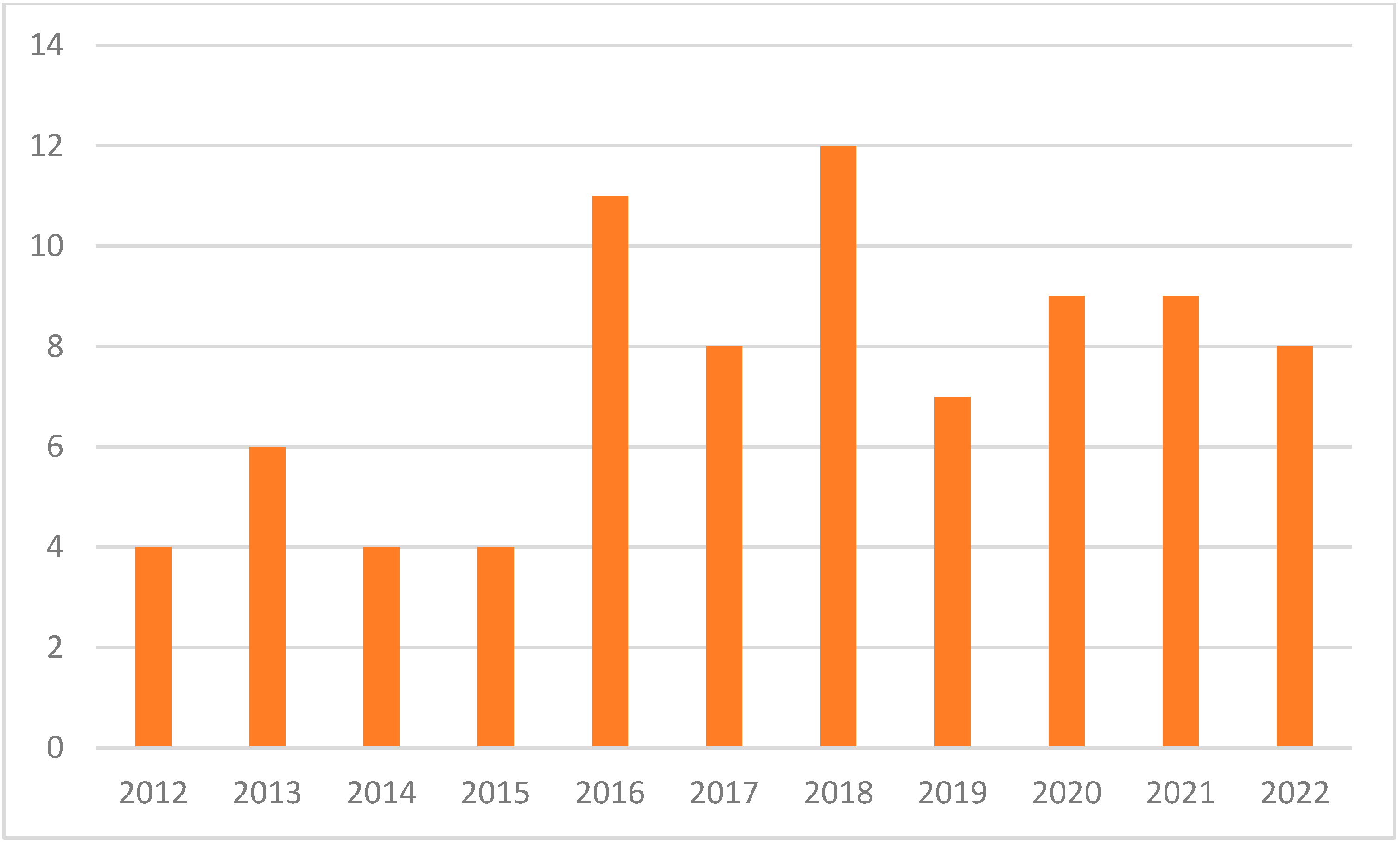
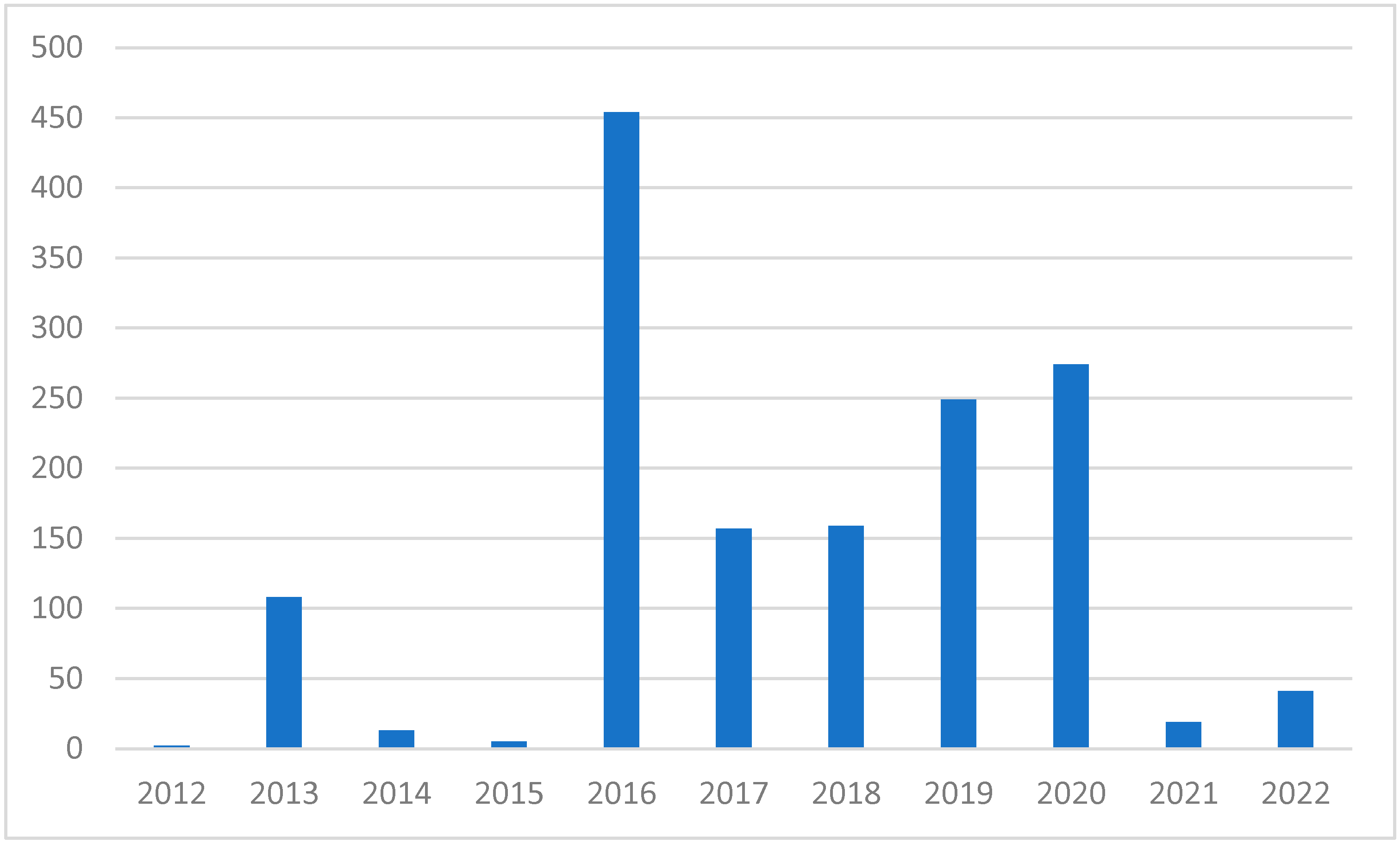
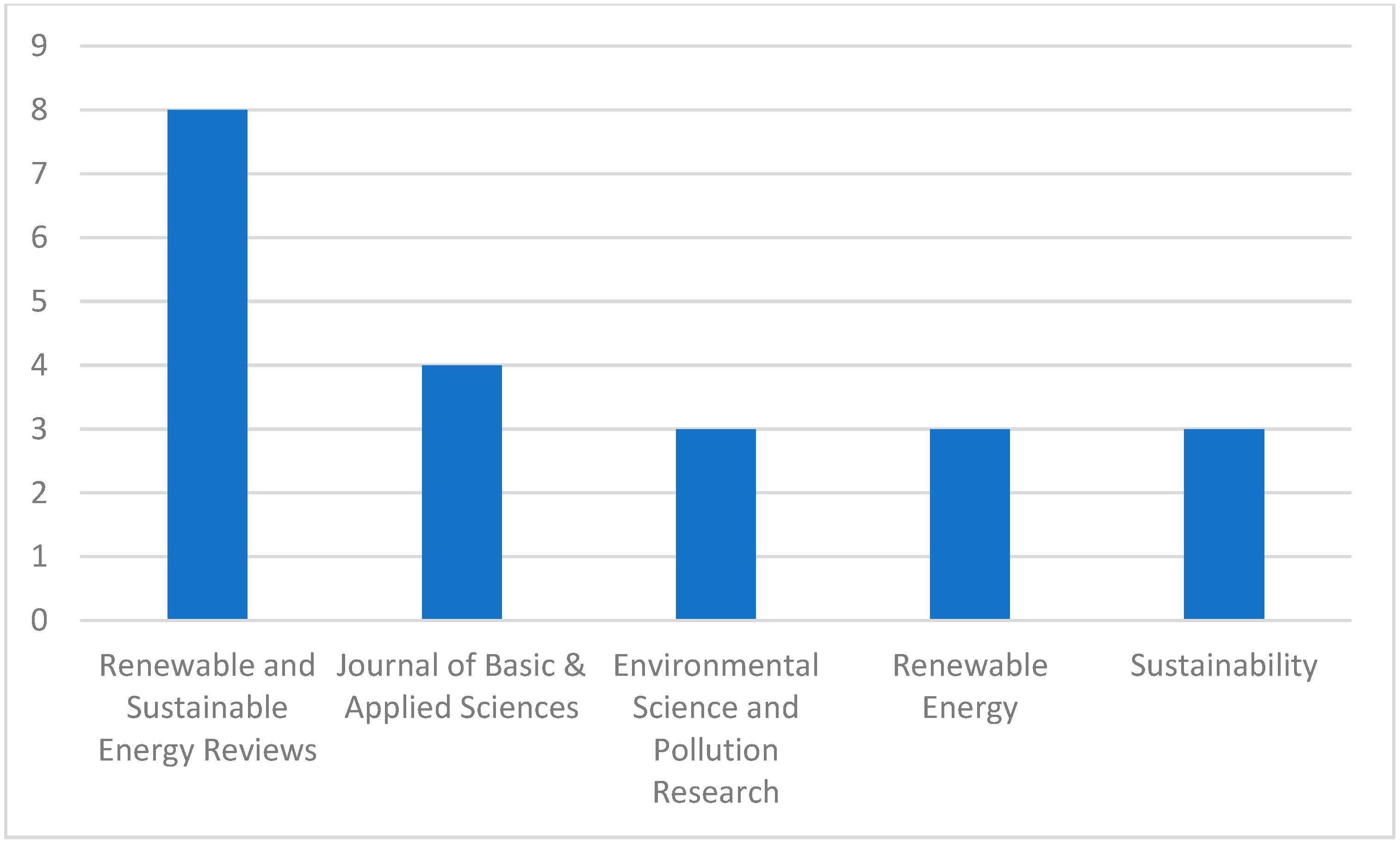
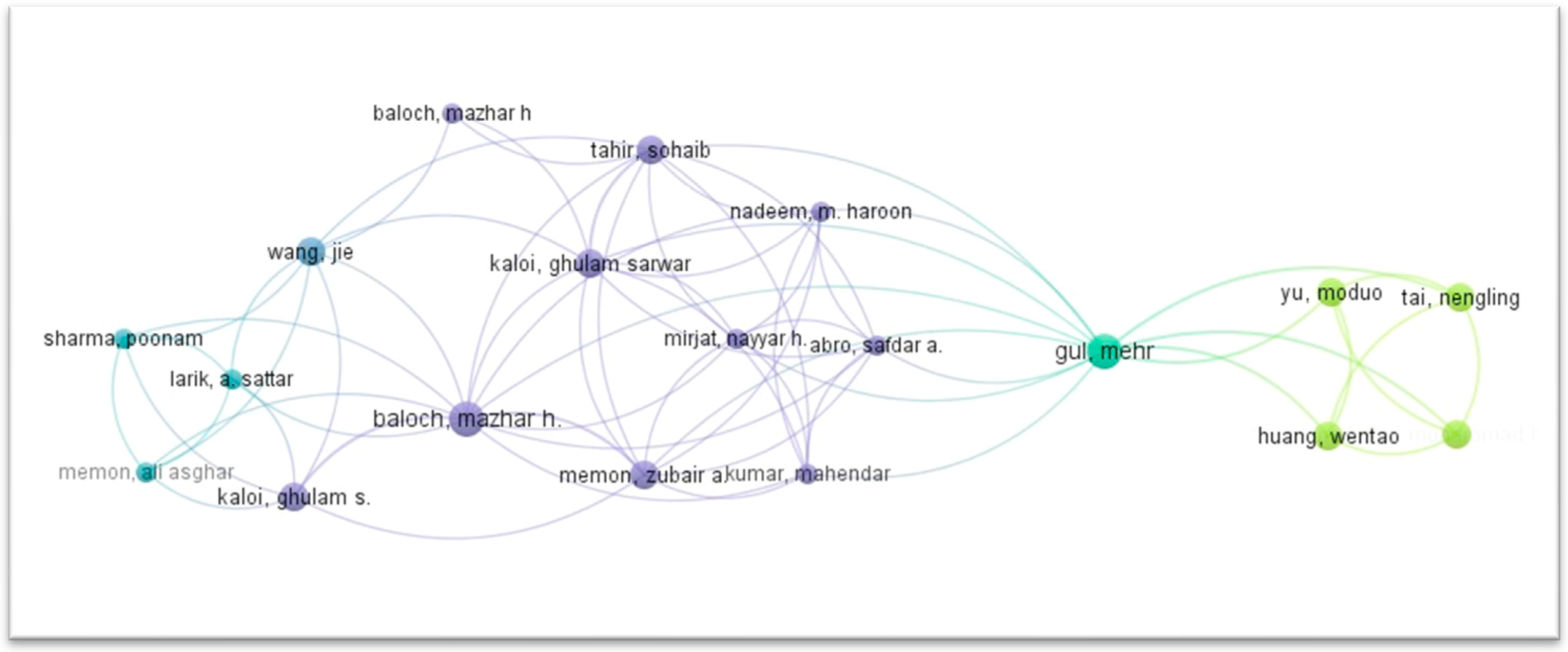
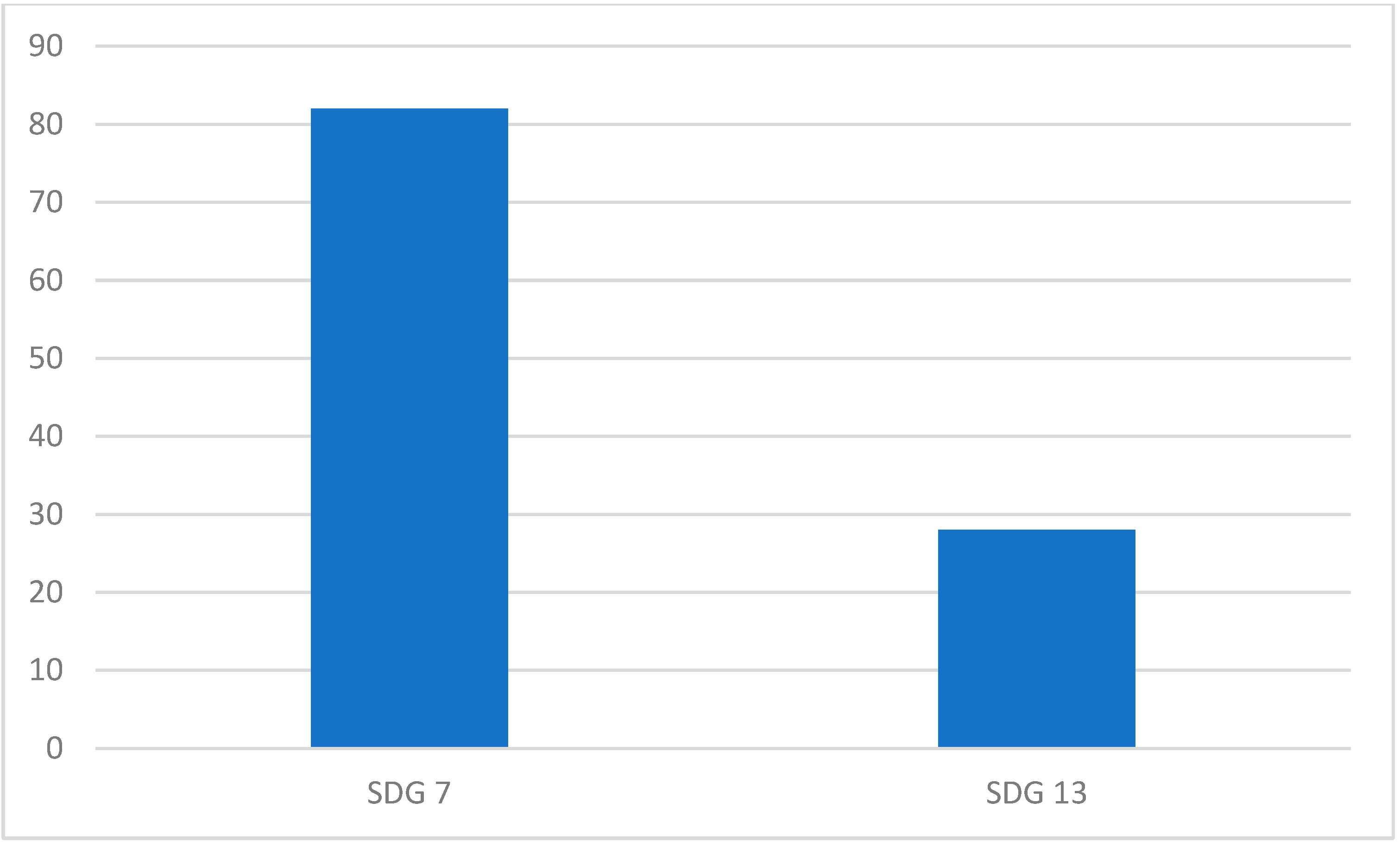
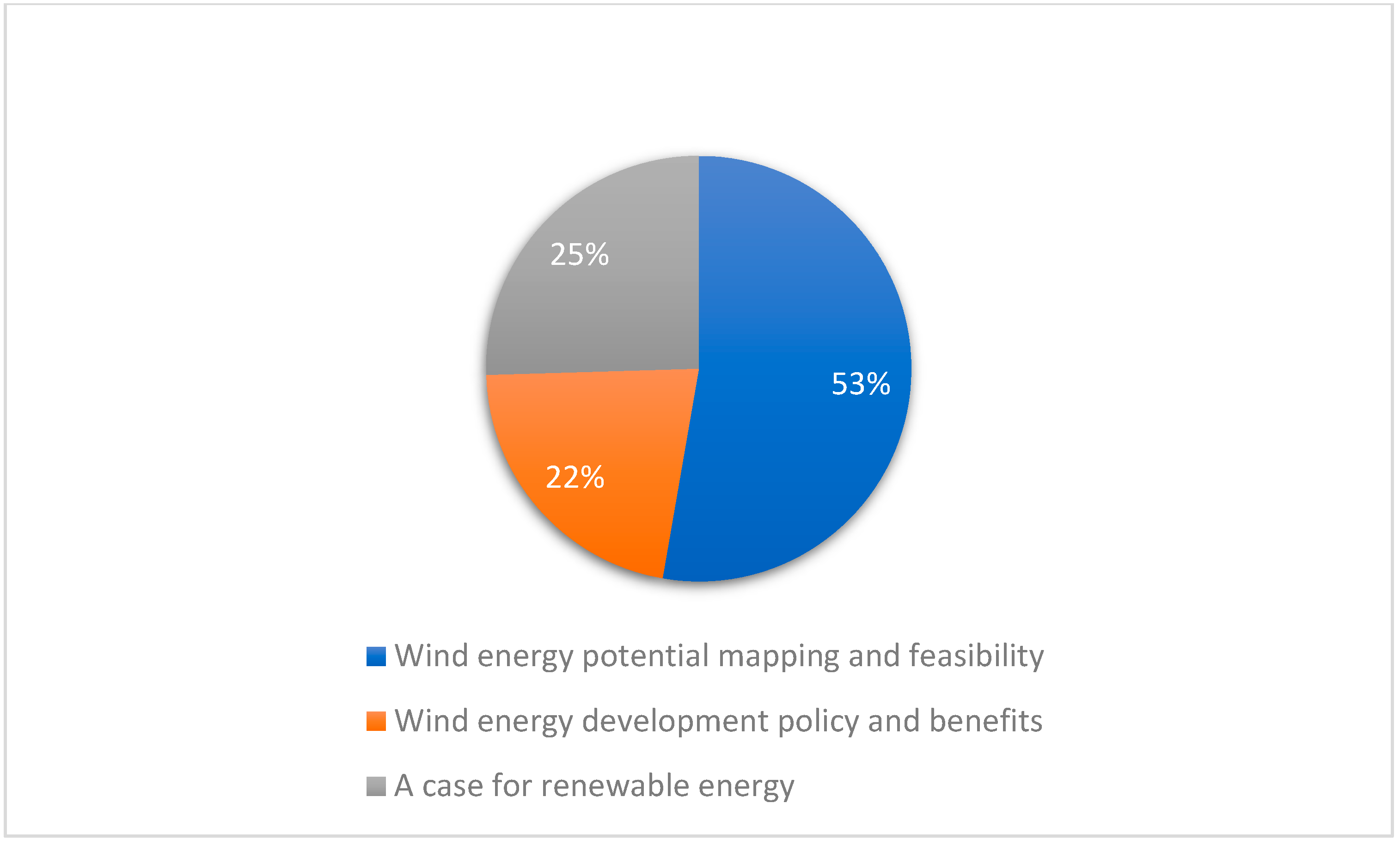
| Sr. No. | Title | Authors | Source Title | Year | Times Cited |
|---|---|---|---|---|---|
| 1 | Strategic renewable energy resources selection for Pakistan: Based on SWOT-Fuzzy AHP approach [24] | Wang, Ying; Xu, Li; Solangi, Yasir Ahmed | Sustainable Cities and Society | 2020 | 171 |
| 2 | Evaluating the strategies for sustainable energy planning in Pakistan: An integrated SWOT-AHP and Fuzzy-TOPSIS approach [25] | Solangi, Yasir Ahmed; Tan, Qingmei; Mirjat, Nayyar Hussain; Ali, Sharafat | Journal of Cleaner Production | 2019 | 148 |
| 3 | Current status and overview of renewable energy potential in Pakistan for continuous energy sustainability [26] | Ghafoor, Abdul; Rehman, Tanzeel ur; Munir, Anjum; Ahmad, Manzoor; Iqbal, Muhammad | Renewable and Sustainable Energy Reviews | 2016 | 115 |
| 4 | Renewable energy technology acceptance in Peninsular Malaysia [27] | Kardooni, Roozbeh; Yusoff, Sumiani Binti; Kari, Fatimah Binti | Energy Policy | 2016 | 114 |
| 5 | Current scenario of the wind energy in Pakistan challenges and future perspectives: A case study [28] | Baloch, Mazhar H.; Kaloi, Ghulam S.; Memon, Zubair A. | Energy Reports | 2016 | 81 |
| 6 | Evaluating wind energy potential in Pakistan’s three provinces, with proposal for integration into national power grid [29] | Shami, Sajjad Haider; Ahmad, Jameel; Zafar, Raheel; Haris, Muhammad; Bashir, Sajid | Renewable and Sustainable Energy Reviews | 2016 | 64 |
| 7 | Evaluation of wind power potential in Baburband (Pakistan) using Weibull distribution function [30] | Shoaib, Muhammad; Siddiqui, Imran; Amir, Yousaf Muhammad; Rehman, Saif Ur | Renewable and Sustainable Energy Reviews | 2017 | 62 |
| 8 | Towards empowerment of the renewable energy sector in Pakistan for sustainable energy evolution: SWOT analysis [31,32] | Kamran, Muhammad; Fazal, Muhammad Rayyan; Mudassar, Muhammad | Renewable Energy | 2020 | 60 |
| 9 | Greener energy: Issues and challenges for Pakistan wind power prospective | Bhutto, Abdul Waheed; Bazmi, Aqeel Ahmed; Zahedi, Gholamreza | Renewable and Sustainable Energy Reviews | 2013 | 53 |
| Theme | Studies Included |
|---|---|
| Wind energy potential mapping and feasibility | [15,24,29,30,34,36,37,45,46,47,48,49,51,52,53,54,55,56,57,58,59,60,61,62,63,64,65,66,67,68,69,70,71,72,73,74,75] |
| Wind energy development policy and benefits | [10,25,28,32,33,42,43,44,59,76,77,78] |
| A case for renewable energy | [15,26,27,31,70,71,72,73,79,80,81,82,83,84] |
Publisher’s Note: MDPI stays neutral with regard to jurisdictional claims in published maps and institutional affiliations. |
© 2022 by the authors. Licensee MDPI, Basel, Switzerland. This article is an open access article distributed under the terms and conditions of the Creative Commons Attribution (CC BY) license (https://creativecommons.org/licenses/by/4.0/).
Share and Cite
Turi, J.A.; Rosak-Szyrocka, J.; Mansoor, M.; Asif, H.; Nazir, A.; Balsalobre-Lorente, D. Assessing Wind Energy Projects Potential in Pakistan: Challenges and Way Forward. Energies 2022, 15, 9014. https://doi.org/10.3390/en15239014
Turi JA, Rosak-Szyrocka J, Mansoor M, Asif H, Nazir A, Balsalobre-Lorente D. Assessing Wind Energy Projects Potential in Pakistan: Challenges and Way Forward. Energies. 2022; 15(23):9014. https://doi.org/10.3390/en15239014
Chicago/Turabian StyleTuri, Jamshid Ali, Joanna Rosak-Szyrocka, Maryam Mansoor, Hira Asif, Ahad Nazir, and Daniel Balsalobre-Lorente. 2022. "Assessing Wind Energy Projects Potential in Pakistan: Challenges and Way Forward" Energies 15, no. 23: 9014. https://doi.org/10.3390/en15239014
APA StyleTuri, J. A., Rosak-Szyrocka, J., Mansoor, M., Asif, H., Nazir, A., & Balsalobre-Lorente, D. (2022). Assessing Wind Energy Projects Potential in Pakistan: Challenges and Way Forward. Energies, 15(23), 9014. https://doi.org/10.3390/en15239014










